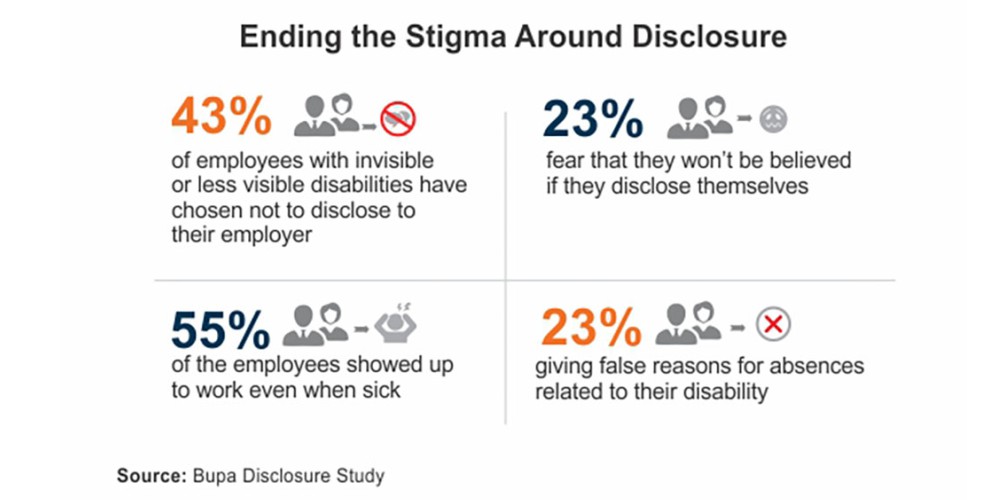A recent study by Bupa found that almost half (43%) of employees with invisible or less visible disabilities have chosen not to disclose to their employer, the most prominent reasons cited being fear that they won’t be believed (23%) and fear that disclosure would act as a barrier to career advancement.
The most concerning finding of all, however, was the impact of masking on those who did not disclose, with 55% of the employees surveyed reporting showing up to work even when they did not feel well enough to perform their tasks and 23% giving false reasons for absences related to their disability.
Despite the strides made towards equity and inclusion for people with disabilities at work in recent years, these sobering statistics point towards a culture of presenteeism and stigma where a significant cohort of employees with disabilities that are not immediately apparent to those around them feel compelled not to bring their whole selves to work.
The good news is there is plenty we can do within our organisations to change these statistics for the better and equip of colleagues with a safe environment in which to disclose.
The first crucial thing to consider is universal design and how you might incorporate this into your organisation.
Are there adaptations that can be offered to the organisation as a whole where disclosure of a disability isn’t a perquisite to access the adaptation? Examples might include a flexible working policy, a quiet room where people can work without distractions, a policy where 30-minute calls are reduced to 25 minutes and 1-hour calls to 50 minutes in order to allow for some rest and decompression time between calls and if an Employee Assistance Programme exists at your company, releasing regular comms to raise awareness of what employees can avail of as part of this programme. Offering flexibility and accessibility to everyone, regardless of disclosure, takes a lot of stigma away from accessing adaptations and also is extremely helpful towards people who may not even be aware that they have a disability which impacts them at work, e.g. undiagnosed neurodivergent people.
It is also important to establish your company culture as one that openly shows the actions it takes to learn and be inclusive in practice. Having a line about disability inclusion in your company’s DEI strategy is one thing, but taking tangible actions to show that you are sincere in your commitment to disability inclusion is another thing entirely! Be proactive and show your colleagues that they can approach you with information about their disability without fear of judgement – this could take the form of training for all line managers; senior leadership being more vocal in sharing their learning journey on disability in the workplace with the wider company; bringing in self-advocates to share their lived experience and using this opportunity to learn from them what could make a difference for your colleagues with disabilities. Fostering a culture of empathy where actions speaks louder than words and where managers show vulnerability by admitting where their knowledge gaps are and the training/actions they’re undertaking to help close this gap is one in which colleagues with disabilities will likely feel much more free to disclose without fear of repercussions.
Ultimately, each company is different and it may be worth your Employee Resource Group (if you don’t have one for disability, then start one!) to discuss how you may bake inclusivity into your company’s own unique culture as a starting point.

